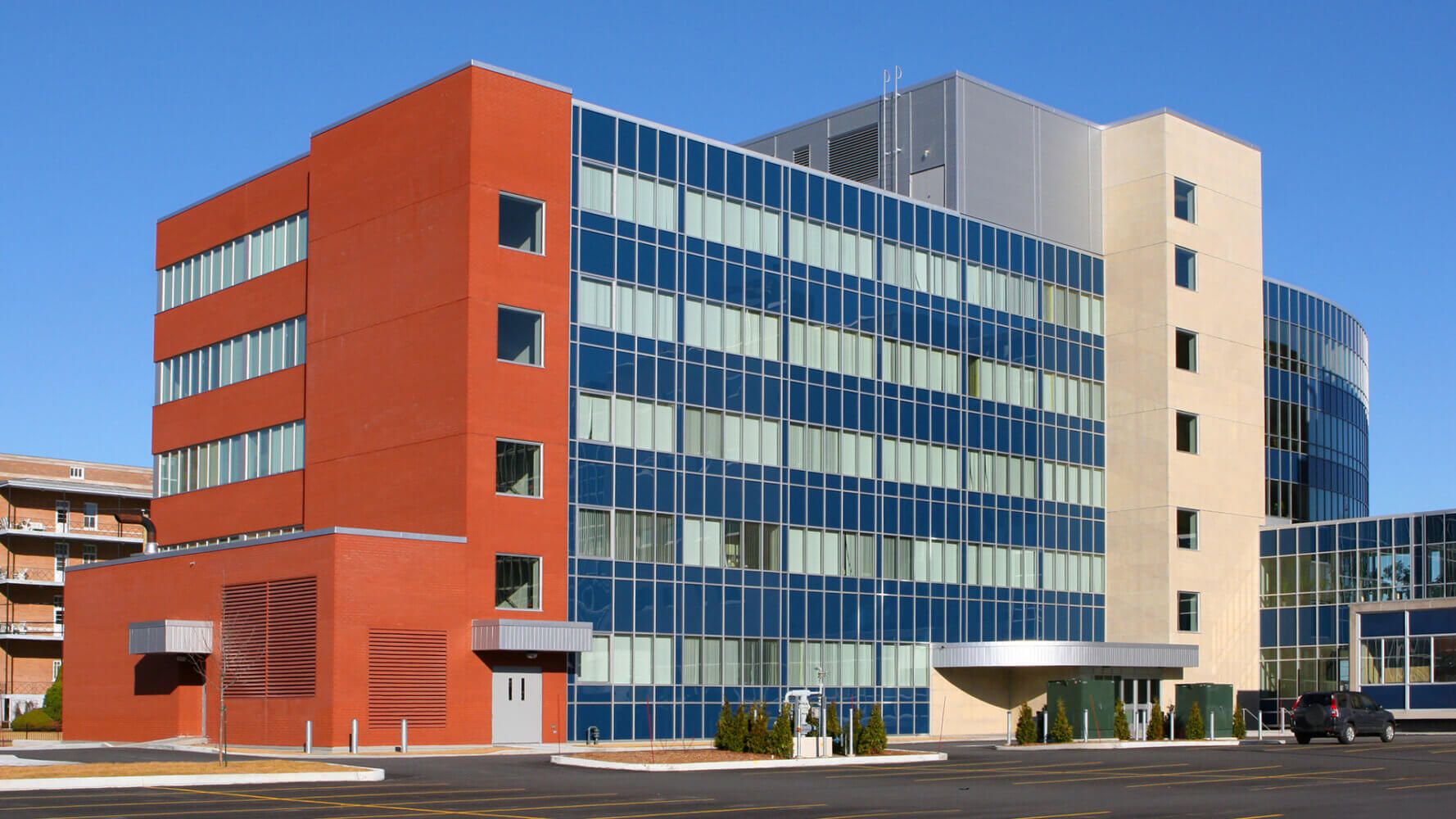
Hospitals in the U.S. are rapidly building new facilities and renovating existing ones. Are hospital bonds an appealing opportunity for investors seeking extra yield?
Introduction
Constructing a new hospital or embarking on a significant renovation project are likely among a hospital management team’s most essential undertakings — and they often prompt facilities to issue bonds to finance these endeavors. In this article, we explore key factors driving the surge in hospital expansions and our perspective on selecting hospital bonds that offer strong and stable revenue streams to support their yield advantage over other municipal credits.
Surge in Hospital Expansion
Hospitals frequently tackle new construction projects for a variety of reasons. At a fundamental level, they may upgrade and invest in more state-of-the-art medical equipment to enhance patient care or expand existing facilities to provide additional services such as trauma centers, surgical rooms or specialized treatments. In some cases, entirely new facilities may increase overall capacity to meet the growing demands of their fast-growing communities. Whatever the reason, hospital construction remains strong despite surging costs and higher interest rates. As seen in the chart below, hospital construction spending has accelerated since the pandemic and is near an all-time high.
Hospital Construction on the Rise
Source: St. Louis Fed, U.S. Census Bureau, National Bureau of Economic Research
What’s driving the surge?
We believe the hospital sector has been one of the more exciting places to invest over the past few years, especially as hospital administrators managed through the pandemic — an event highlighting how vulnerable a hospital’s infrastructure and operations can be. Even beyond that, other notable factors have also prompted hospitals to build new facilities or renovate.
-
Aging Demographics and Population Growth
According to the National Institute of Health, by 2050 the U.S. population is expected to increase by 41%, and the U.S. Census Bureau expects the aging population (65 years or older) to double during this time. Given these projections, the NIH also expects the annual number of hospitalizations to increase by 67% over this same period and for the length of hospital stays to climb dramatically. In response to this demand, hospitals are expanding their footprint to accommodate older patients, who typically require more exhaustive medical attention, specialized care, surgical procedures and treatment for chronic conditions, and other health services. Hospitals are also proactively expanding into new markets where there could be a surge in population growth.
-
Drive to Remain Competitive and Gain Market Share
The strength of hospital bonds is determined by a given facility’s ability to generate income, so there is an incentive for hospitals to remain competitive — and to that end, they may, for example, make strategic investments in new construction projects as a proactive measure to gain market share. Moreover, to draw in a more extensive patient base, hospitals often invest resources to create more comfortable, high-quality, and patient-centered facilities, as this can impact a patient’s choice of healthcare provider and, ultimately, a hospital’s reputation and bottom line. This may involve the development of private rooms, healing outdoor spaces and gardens, and other modern amenities. These improvements contribute to the well-being of patients and serve as a way for hospitals to market themselves as having the most state-of-the-art facilities to increase the number of patients and generate more income.
-
Infrastructure Modernization
Many hospitals have outdated infrastructure that requires extensive maintenance and upgrades, projects that are often necessary to ensure safe hospital operations. For example, the hospital may temporarily cancel critical surgeries if an operating room air system fails. A malfunctioning HVAC system could lead to potentially life-threatening infections for patients and staff members. Or, potentially, advancements in medical technology may necessitate updated infrastructure to support new equipment and procedures. Eventually, building new facilities becomes more cost-effective than continually upgrading and fixing old ones.
-
Disaster Preparedness
COVID-19 revealed how vulnerable a hospital’s infrastructure and operations can be when disaster hits. In the years since the pandemic started, hospitals have refocused on improving their “patient flow through.” For instance, some have re-examined the establishment of one entrance instead of multiple ones, which can aid in directing patients to the right areas while limiting exposure points. Hospitals are also investing in preparations for future surge capacity — which may, for example, mean constructing a new parking structure to facilitate increased outpatient care.
-
Credit Selection is Paramount
Hospital bonds have consistently held a meaningful role in the broader municipal bond market, making up approximately 13% of the Bloomberg Municipal Bond Index (and about 9% of our Strategic Muni Income Strategy’s benchmark, the ICE BofA US Muni Index). And the sector is poised to claim an even bigger slice of the market amid an expected rise in issuance levels. This presents a unique opportunity for investors, especially since hospitals are among the highest-yielding sectors, as seen in the table below. However, the income variability of hospitals means the sector also carries elevated risks compared with others, underscoring the critical importance of careful bottom-up credit selection in distinguishing between good and lower-quality hospital credits.
-
Hospital Bonds Offer Attractive Yields but Also Higher Risk
Yield-to-Worst (%) Average Credit Quality Average Maturity (Years) General Obligation Bonds State GO 2.77 AA1/AA2 9.7 Local GO 3.08 AA1/AA2 13.1 Revenue Bonds Electric 3.08 AA3/A1 14.0 Hospital 3.78 A1/A2 16.7 Housing 3.99 AA1/AA2 19.8 Transportation 3.4 AA3/A1 15.0 Education 3.16 AA2/AA3 14.8 Water Sewer 3.05 AA1/AA2 14.1 Leasing 3.11 AA3/A1 12.8 Source: Schwab, Bloomberg Municipal Bond Index, as of January 18, 2024
To invest in the most attractive credits and avoid credits that have poor risk-adjusted profiles, our municipal bond team focuses on several critical financial elements and trends.
When assessing hospital credit, our team scrutinizes the hospital’s financial performance over several years, paying particular attention to trends in its profitability or losses. Consistent positive income generation over time is a favorable indicator of stability and growth. In contrast, erratic financial patterns, such as sharp dips in revenue, for instance, or significant acquisitions that we believe lack an accompanying solid business plan, are a red flag. We also pay attention to the hospital’s debt burden and whether it has been too high for too long, thus negatively impacting the hospital’s ability to stay profitable in the future.
We furthermore favor hospitals that have demonstrated consistent patient growth and have a history of remaining competitive by maintaining or growing their market share as all this translates to stable revenue streams. In some cases, hospitals with a unique setup, like those supported by property taxes in limited hospital-access areas, present alternative revenue streams that can bolster the hospital’s income-statement profile.
Putting It All Together
Investing in hospital revenue bonds provides investors with financial benefits and represents an attractive method to diversify Muni portfolios. Healthcare is an essential need within any community, and bonds from financially healthy hospitals can provide reliable income streams and be priced more attractively during periods of economic uncertainty or market volatility. Given a possible U.S. economic slowdown going into 2024, selecting high-quality hospital bond credits with predictable revenue sources, may be key to mitigating downside risks and maximizing yield potential.
Discover more about:
More Insights

FOMC Update: Fed Approves Third Consecutive Rate Cut, Projects Slower Pace

Luxury Brands Navigate China Slowdown and Tariff Pressures

Thornburg Investment Income Builder Fund – 4th Quarter Update 2025

Extract Maximum Income Using Active Management

Investment Perspectives from the Road: European Luxury Goods


